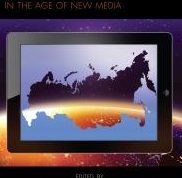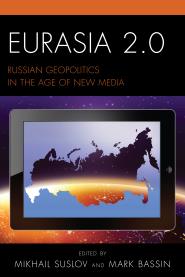
 The rise of global information age impacts power relations in the world, boosts the spread of global norms and principles, and affects political structures and cultures of states. In addition to the spread of global information networks, globalization fosters economic interdependence, technological innovation, multilateral institutions, and the proliferation of non-state actors, which are deemed to weigh profoundly in global affairs. In the new global digital age, which encourages interconnectivity and challenges the established norms of territoriality, geographic dichotomies, and the construction of meaning about the physical space, geopolitics is under severe criticism. The interactions between territory, geography, and international politics and relations are taken as something outdated, revisionist and reactionary. The perspectives of geopolitics as a “grand strategy” are also more frequently portrayed as a discourse of great state rivalry and domination, mostly serving the interests of major powers and simultaneously favoring an exclusive focus on states, rather than other actors. Finally, information warfare, cyber-attacks, global threats, such as climate change, and especially the rise of new forms of media transcend classical interstate dynamics and confront traditional geopolitical understandings.
The rise of global information age impacts power relations in the world, boosts the spread of global norms and principles, and affects political structures and cultures of states. In addition to the spread of global information networks, globalization fosters economic interdependence, technological innovation, multilateral institutions, and the proliferation of non-state actors, which are deemed to weigh profoundly in global affairs. In the new global digital age, which encourages interconnectivity and challenges the established norms of territoriality, geographic dichotomies, and the construction of meaning about the physical space, geopolitics is under severe criticism. The interactions between territory, geography, and international politics and relations are taken as something outdated, revisionist and reactionary. The perspectives of geopolitics as a “grand strategy” are also more frequently portrayed as a discourse of great state rivalry and domination, mostly serving the interests of major powers and simultaneously favoring an exclusive focus on states, rather than other actors. Finally, information warfare, cyber-attacks, global threats, such as climate change, and especially the rise of new forms of media transcend classical interstate dynamics and confront traditional geopolitical understandings.
While all above-mentioned critiques of geopolitics signal about underlying complexities of the globalizing world, the Eurasia 2.0: Russian Geopolitics in the Age of New Media volume masterfully demonstrates that certain recurrent assumptions of geopolitics continue to be very relevant today, particularly when the issues of power and influence touch upon the questions of ideology, national character, and identity. Mikhail Suslov, Mark Bassin and all contributors to this excellent collection of essays go a long way towards uncovering the uneven and multifaceted character of changes in Russia and the politics of identity in Eurasia, by expanding the analytical framework of classic geopolitics and applying it “to a very new subject, namely, the information society.” The book effectively develops a “critical geopolitical perspective on political and social affairs in post-Soviet Russia, and …focus[es] this critical gaze on the phenomenon of digital geopolitics” (xxiii).
By examining complex and ongoing issues of cultural practices, political changes, societal struggles, ideological inclinations, and everyday communication, the well-researched chapters in this thought-provoking volume, demonstrate that the “communicative possibilities,” which emerged due to the new media environment, allow for “the flow of geopolitical knowledge” to and from the formal realms of power and expert community to the different parts of society, including communities, groups, and individuals. The authors of this interdisciplinary collection explore new territorial struggles and sensibilities, the transformation of old ideologies, and the formation of new identities of global, regional, as well as local Selves, as related to the “digitalization of geopolitical knowledge and practice” (xxv). The volume also enhances our understanding of the conception that geography, demography, and spatial peculiarities, are undeniably linked with politics, identity, and ideology and cannot be scrutinized separately. Geopolitical deliberations remain to be relevant because of geographic formations that are immobile, and which cannot be underestimated, varying from resources to significant historical locations, emotionally important sites, and neighboring relations. Taking into account the events of the past several years, the Ukrainian crisis, which became “a virtual ‘folk school’ for developing and familiarizing geopolitical ways of thinking and feeling on a truly mass scale” ( xxiv), serves as a thematic setting for many authors in this volume. Because there remains much misunderstanding and misinfomation about the politics and society in the region, largely due to the lack of research on Russia and Eurasia, the scholarship in this book is not only welcome, but also necessary.
The book is divided into five parts. The first part of the volume provides the readers with various portrayals of space, power, and agency. It addresses the challenging issues of constructing global, regional and local identities, as well as internalizing geographical expanses, through travel, movies, and online communication tools. Saara Ratilainen explores Russian travel blogs and their influence on “global identities and popular geopolitical imaginations,” which reflect on the dominant ideas of migration and globalization (4). The chapter effectively analyzes how the notions of free mobility are employed by the online communities fostering the representation of individual Russians as global actors belonging to the travel culture and making “the whole world home” (19). Birgit Beumes examines the space and power relations as portrayed in contemporary films which use the journey as their main plot. Her chapter offers an interesting analysis of the Russian road movie, with road leading nowhere, exposing the challenges of the center-periphery relations in need of reconnection (25-39). Galina Zvereva also contributes to the discourse on the center-periphery relations by exploring the collective spatial identities created and promoted by ordinary users on the Russian segment of YouTube, specifically of the four large regions: Siberia, the Urals, the Far East, and the Middle Volga (42). She demonstrates that perceptions about “local civilization” have changed considerably due to the new ways of communication. Digital narratives reveal that ideas of unique civilizational character and distinct historical and geographical significance are becoming widespread.
The authors in part two explore contemporary geopolitical views, the way these views become reflected or rejected by the state, and the manner these views influence public perceptions. Andrei Tsygankov examines Russia’s Eurasia notions, ideas, and narratives, as found in various political and ideological currents after the collapse of the Soviet Union. He successfully argues that due to the needs to manage diversity and preserve national unity the state uses the ideas of radical Eurasianism only pragmatically, while pursuing its own priorities with regard to the formation of the Eurasian Union. The age of new media provides actors with the possibility to exercise power and control not by violence, but by dominance in the realm of information. The state does not only use the soft power, but remains competitive through the linkages with domestic and foreign constituencies (63-75). Marlene Laruelle traces the intellectual and ideological path of Geidar Dzhemal, one of the founders of Russia’s Islamic geopolitics, who “links calls for an Islamist political revolution with Russia’s mainstream geopolitical narrative on Eurasia and references to the European far-right esoteric theories” (82). In her excellent narrative, the author demonstrates that Dzhemal’s ability and legitimacy to develop his views of an Islamic liberation theology is mainly due to his presence on the media space, with digital environment explaining much of his popularity, where even paradoxical ideas can appear to make sense. Sirke Makinen analyzes practical geopolitical reasoning in “a narrower context of the Russian foreign policy elite…one particular actor of public diplomacy—Konstantin Kosachev, the head of Rossotrudnichestvo” via texts published in the media (101). The author competently shows how Kosachev developed his view of public diplomacy as “people’s diplomacy,” promoting the idea that Russia, as “the righteous defender of the values of sovereignty and tolerance” fosters notions and ideals important to “the majority of ordinary clear-headed people in any society, who do not wish for confrontation…” (116-117).
The concepts of “great-powerness” or derzhavnost’ in geopolitical discourses are addressed by the chapters in part three of the book. Hanna Smith provides an excellent analysis of “Greatpowerness” as part of Russian state and national identity that acts as state ideology, and unites all Russian political elites and most Russian citizens (126). The chapter discusses the way that three main foreign policy schools in Russia treat “greatpowerness,” as well as specifically examines the election articles by President Putin in 2012. Fabian Linde presents an informative account of the state-sponsored programs of gathering support from young Russians with the goal to promote a common Eurasian identity during the establishment of the Eurasian Union. The author posits that the Russian government “tends to invest a significant amount of energy into ‘soft power’ initiatives that are meant to prop up the support for their political and economic activities” (149-151). Per-Arne Bodin discusses in a somewhat normative way the three provocative imaginary maps of future Russian Empire, where the country is represented as a super empire on unprecedently large scale. The author believes that the “grandness of imagined geographical space” in these extreme “fantasy maps” is “very pertinent to our understanding of Russian thinking today” (167-179).
The chapters in part four explore the emergence and proliferation of geopolitical ideas into the realm of digital media, including social networks and individual webpages. Vlad Strukov uses the Russia Today website and the micro-blog of the RT director of “illustrate the contradictions of patriotism as a geopolitical phenomenon” over the period of four months November 2014-February 2015 (185). The author’s goal is to examine how the government “aims to co-opt information flows in digital communication systems” to produce and develop the sense of patriotism (187). Rihor Nizhnikau in his excellent analysis of Belarus, underscores the significance of the ‘internal discourse of identity’ for the establishment of geopolitical identity and the role of media in country with deep societal cleavages. The government’s use of different media sources, even those who might be critical of the former, is aimed at promoting a more unifying national identity (211, 214). Alla Marchenko and Sergiy Kurbatov examine the Facebook accounts of Ukrainian officials and public figures to demonstrate the key strategies used to create the image of the enemy, and the path of proliferation of geopolitical symbols representing Russia as an essential external threat.
The authors in part five speak to the issues raised in the initial chapters about the generation and consumption of popular geopolitics. Dirk Uffelmann examines the linguistic divide in Ukraine by “drawing seemingly clear borderlines on maps” (250). The author investigates such maps with binary correlations between geopolitics and geolinguistics, with regards to Russian and Ukrainian online sources (252). Greg Simons provides a remarkable analysis of the use of the digital media in the Ukrainian conflict, by focusing on the events of Euromaidan and the violence that followed and how these were characterized by the protagonists and antagonists online (276). Mikhail Suslov examines the development of Russian geopolitical identities in the online discussions about the Ukrainian crisis, with a special emphasis on the different interpretation of the notion of “Russian World” (295).
Overall, the book is an important, timely and relevant effort to understand the re-emerging concept of geopolitics in the age of new media. The amount of nuanced research in this volume is noteworthy. One of the limitations of the book is the lack of the clear theoretical integration, as evidenced by the disagreements in authors’ arguments and portrayals of identity, as related to the concepts of geopolitics, and a lack of a concluding chapter. Undoubtedly, the volume is wide-ranging and interdisciplinary, and all authors analyze the challenges of geopolitics through the lens of new media approaches. The viewpoints by some authors, however, are not balanced with some chapters seemingly advancing a certain agenda, or promoting a particular perspective without adequately representing the other part of the debate. Nonetheless, Eurasia 2.0 is a valuable scholarly contribution, which provides a much-needed indication of the processes and challenges in Eurasia, and which will serve as a foundation for future projects.
Reviewed by Lada V. Kochtcheeva, North Carolina State University
Eurasia 2.0: Russian Geopolitics in the Age of New Media
Edited by Mikhail Suslov and Mark Bassin
Publisher: Lexington Books
Hardcover / 362 pages / 2016
ISBN: 978-1-4985-2141-3
To read more book reviews, please click here.
Published on May 2, 2017.




